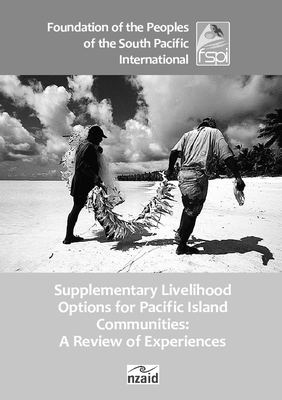Supplementary Livelihood Options for Pacific Island Communities: A Review of Experiences

Key points in document
- The study, carried out by the Foundation of the Peoples of the South Pacific International (FSPI), reviews "supplementary livelihood” projects across the South Pacific with the goal of identifying the determinants of success for these projects. FSPI uses the term “supplementary livelihood” instead of “alternative livelihood” because their past experiences have proven that households intentionally diversify livelihoods or occupations to avoid being without income.
- The supplementary livelihoods addressed in this document fall under the sustainable livelihoods framework; that is, they aim to reduce poverty and maintain environmental sustainability, characteristics in line with conservation enterprises.
- The paper found that there is a lack of documentation monitoring the effects and success of sustainable livelihoods efforts. To make up for the lack of information, the paper interviewed 34 individuals closely associated with projects that included supplementary livelihood approaches.
- Of the 30 projects reviewed, 23 were deemed “successful.” Successful enterprises demonstrated sustainability by generating income and continuing after project completion and subsidy support.
- The study found that successful supplementary livelihood approaches are significantly related to the following factors: “(1) Whether the supplementary livelihood project involved an initial baseline study; (2) The extent of leadership support for the livelihood option; (3) The social cohesiveness of the target group.”
- Interviewees for the study offered opinions on why projects were successful or unsuccessful. Factors mentioned for success included infrastructure, such as transport for goods, government support and cooperation, and technical skills trainings. Some factors mentioned for failure were lack of technical skills, lack of strong leadership, and a lack of alignment to the community’s needs.
- With the exception of two studies examined, the supplementary livelihood projects reviewed were considered successful at achieving their goal. The results of the effects achieved are not described in detail, but we can assume from the tables provided in the document that successful supplementary livelihood projects achieved (or are in the process of achieving) the “Aim(s) of project.” For instance, the nature trail at Ngardok Nature Reserve in Palau is successfully providing “alternative income generation as fishing areas are restricted due to establishment of MPAs [Marine Protected Areas].”
Information relevant to Learning Questions:
Are enabling conditions in place to support a sustainable enterprise?
- Stakeholder alignment, diversification
- Market demand, access to credit/capital
- Governance
- Policies for enterprises, business alliances
- Financial management capacity, technical capacity
- Inputs, equipment
- Benefit sharing, targeted participants, policies for and enforcement of resource use, planning for external disturbance
Does the enterprise lead to benefits to stakeholders?
- Increased income for participants
- Non-cash benefits
Do the benefits lead to positive changes in attitudes and behavior?
- Not addressed
Does a change in stakeholders’ behaviors lead to a reduction to threats to biodiversity (or restoration)?
- Agriculture and aquaculture
- Climate change and severe weather
Does a reduction in threats (or restoration) lead to conservation?
- Marine ecosystems
- Species

